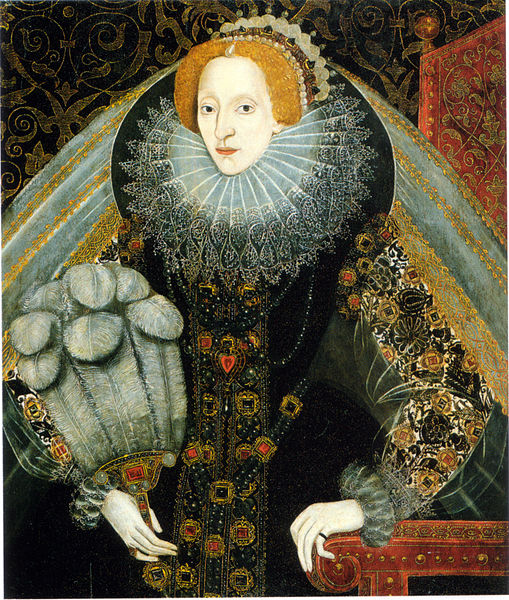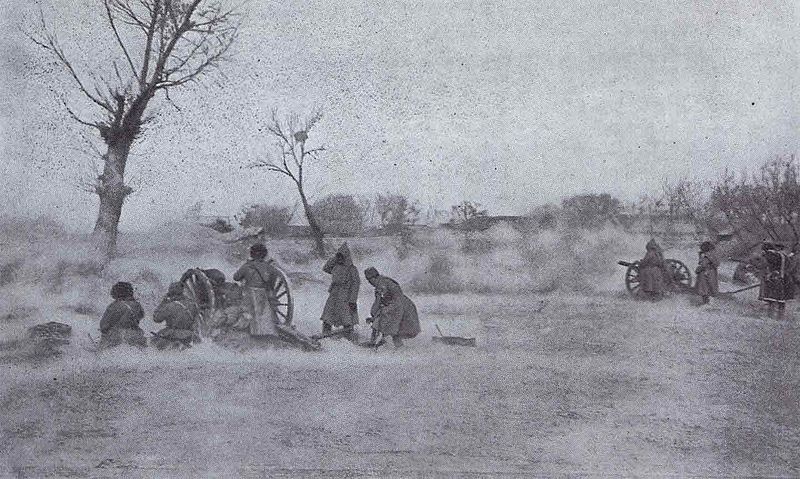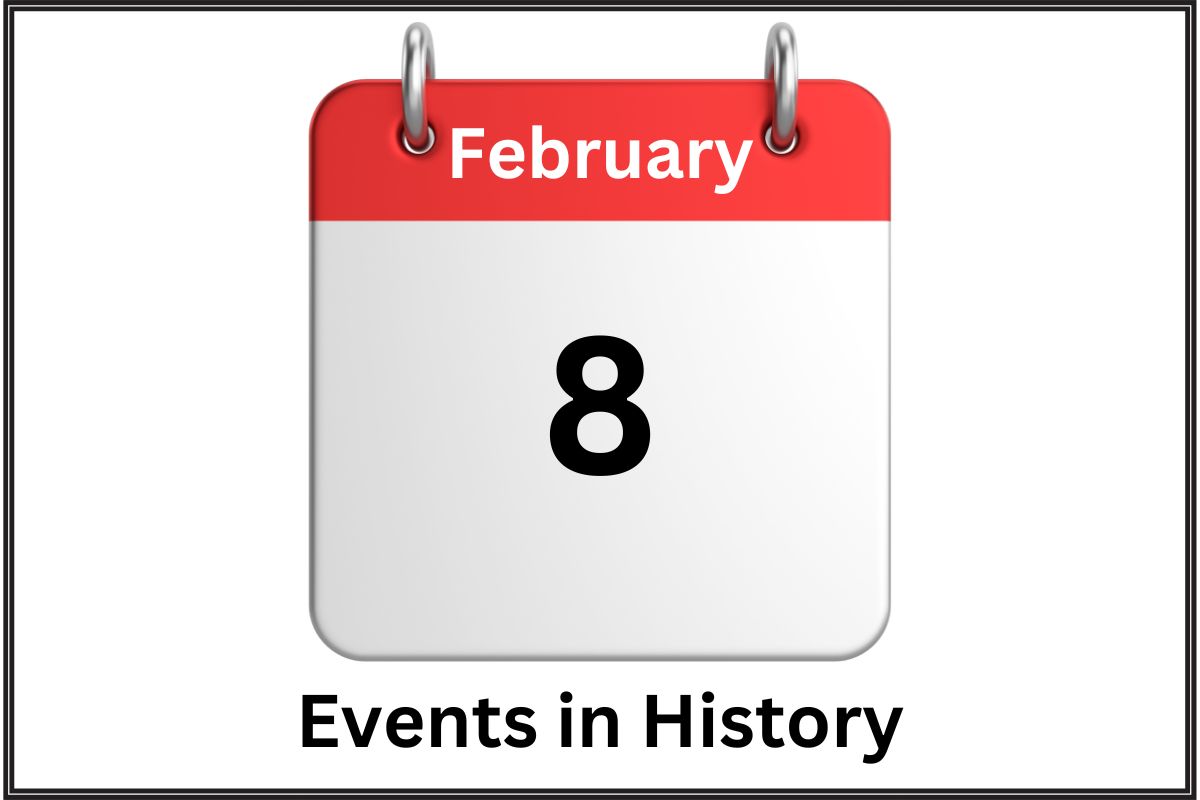This article explores notable historical events that occurred on February 8th, offering a glimpse into significant moments that have shaped various aspects of human history.
From the architectural changes in ancient Rome to innovations in global finance, and pivotal moments in environmental and political history, these events span a wide array of subjects including governance, technology, culture, and international relations.
Each entry provides insight into the enduring impact of these moments on contemporary society, illustrating the complex interplay of factors that have driven human progress and challenge throughout the ages.
February 8th Events in History
421 – Constantius III becomes co-Emperor of the Western Roman Empire
Flavius Constantius, who would later be known as Constantius III, was proclaimed co-Emperor by Honorius, the ruling Emperor of the Western Roman Empire. His rise to power was marked by his abilities as a military leader, particularly noted during the defense against the Visigothic invasions led by King Alaric.
Also Read: February 7 – On this Day in History
The appointment of Constantius as co-Emperor was a move to solidify the Western Empire’s defenses and administration. Unfortunately, his reign was short-lived; he died in 421, the same year he ascended to the throne, leaving behind a legacy intertwined with the struggles of the late Roman Empire.

1587 – Mary, Queen of Scots, is executed on suspicion of having been involved in the Babington Plot to murder her cousin, Queen Elizabeth I
Mary, Queen of Scots, was executed on suspicion of being involved in the Babington Plot to assassinate her cousin, Queen Elizabeth I, and take over the English throne. Mary had been imprisoned for 19 years on Elizabeth’s orders due to her perceived threat as a legitimate Catholic claimant to the English throne.
Also Read: February 9th Events in History
Her execution was carried out at Fotheringhay Castle in England. Mary’s death became a turning point in the Catholic-Protestant divide within England and escalated tensions between England and Catholic monarchies in Europe.
1693 – The College of William & Mary in Williamsburg, Virginia, is granted a charter by King William III and Queen Mary II
The College of William & Mary in Williamsburg, Virginia, was granted its charter by King William III and Queen Mary II of England, making it the second oldest institution of higher education in the United States after Harvard College.
The college was named in honor of the reigning monarchs. Its founding is significant for its early role in American higher education and its contributions to the development of the United States, including the education of several key figures in American history.
1726 – The Supreme Privy Council is established in Russia
The Supreme Privy Council was established in Russia by Emperor Peter the Great as part of his efforts to reform the Russian government and modernize the state.
This council was intended to advise the Emperor on matters of state and to oversee the administration of government policies and decrees. Its creation marked a significant shift in the governance of Russia, moving towards a more systematic and organized approach to administration and governance.
1807 – Battle of Eylau between Napoleon’s French Empire and the Russian Empire led by Bennigsen. Napoleon’s forces fight the Russians to a draw but with heavy losses on both sides
The Battle of Eylau, fought between Napoleon’s French Empire and the Russian Empire led by General Bennigsen, was one of the bloodiest battles of the Napoleonic Wars.
Taking place in Eylau (now Bagrationovsk, Russia), the battle was fought in extremely harsh winter conditions. Despite heavy casualties on both sides, the battle ended inconclusively, with neither side gaining a decisive advantage.
However, it demonstrated the resilience of the Russian army and marked a significant moment in Napoleon’s military campaigns, showcasing the limitations of his reach into Eastern Europe.

1837 – Richard Johnson becomes the first Vice President of the United States chosen by the United States Senate under the provisions of the Twelfth Amendment to the United States Constitution
In the 1836 United States presidential election, no vice presidential candidate received a majority of the electoral votes. According to the Twelfth Amendment to the United States Constitution, the Senate was required to choose the Vice President.
Richard Mentor Johnson of Kentucky was chosen as Vice President, serving under President Martin Van Buren. This remains a unique event in American history, highlighting the complexities of the Electoral College system.
1879 – Sandford Fleming first proposes adoption of Universal Standard Time at a meeting of the Royal Canadian Institute
Sandford Fleming, a Canadian engineer and inventor, proposed the concept of Universal Standard Time at a meeting of the Royal Canadian Institute.
Before Fleming’s proposal, local times were used at each locality, causing confusion and inefficiencies, especially for rail travel and scheduling.
Fleming’s idea was to divide the world into 24 time zones, each one covering 15 degrees of longitude, standardizing time worldwide. This system was later adopted at the International Meridian Conference in 1884, fundamentally changing how time was kept globally.
1887 – The Dawes Act authorizes the President of the United States to survey Native American tribal land and divide it into allotments for individual Native Americans
The Dawes Act, or General Allotment Act, was signed into law by President Grover Cleveland. It allowed the President of the United States to survey American Indian tribal land and divide it into allotments for individual Indians. Those who accepted allotments and lived separately from the tribe were granted U.S. citizenship.
The Act was intended to promote the assimilation of Native Americans into American society but also resulted in the loss of tribal land and culture, as well as the breakup of communities. Over time, Native Americans lost about two-thirds of their lands because of the Dawes Act.
1904 – The Russo-Japanese War begins as Japan launches a surprise naval attack against the Russian fleet at Port Arthur
The Russo-Japanese War began with a surprise night attack by Japan on the Russian Eastern Fleet stationed at Port Arthur, Liaoning, on February 8, 1904. Japan sought to eliminate the Russian presence in the Far East and assert itself as a new power. The war arose from rivalry over control of Korea and parts of Manchuria.
The conflict marked the first time in modern history that an Asian country defeated a European power. The war ended with the Treaty of Portsmouth, mediated by U.S. President Theodore Roosevelt, which recognized Japan’s dominant position in Korea and ceded the Russian lease of Port Arthur and the Liaodong Peninsula to Japan.

1910 – The Boy Scouts of America is incorporated by William D. Boyce
The Boy Scouts of America (BSA) was incorporated on February 8, 1910, by William D. Boyce, a Chicago publisher who had been inspired by the scouting movement founded by Robert Baden-Powell in the United Kingdom.
The BSA was established to teach patriotism, courage, self-reliance, and kindred values to young boys through outdoor activities and educational programs. It quickly became the largest scouting organization in the United States and has been influential in the development of millions of young men throughout its history.
The BSA’s founding principles are embodied in the Scout Oath and Law, guiding scouts in character building and responsible citizenship.
1924 – The first state execution in the United States by gas chamber takes place in Nevada
On February 8, 1924, the first state execution using a gas chamber in the United States took place at the Nevada State Prison in Carson City, Nevada. The executed man was Gee Jon, a member of the Hip Sing Tong criminal society, who was convicted of murdering a rival gang member.
The method was devised as a more humane alternative to hanging or the electric chair. A lethal gas, hydrocyanic gas, was used. This execution marked the beginning of the use of gas chambers for capital punishment in the United States, a practice that has been largely discontinued due to ethical and humane concerns.
1942 – During World War II, Japan invades Singapore
During World War II, on February 8, 1942, Japanese forces initiated their invasion of Singapore, which was then a British colony. The attack came from the north, crossing the Johor Strait, after overwhelming British defenses in Malaya.
The Battle of Singapore lasted until February 15, 1942, when British forces, under Lieutenant-General Arthur Percival, surrendered to the Japanese. This resulted in the largest surrender of British-led military personnel in history and marked a significant point in the Japanese expansion during World War II.
The fall of Singapore was a major blow to British prestige and a significant victory for Japan, emphasizing the need for strategic changes in Allied operations in the Southeast Asian theater.
1952 – Elizabeth II is proclaimed Queen of the United Kingdom
Elizabeth II was proclaimed Queen of the United Kingdom on February 8, 1952, following the death of her father, King George VI, on February 6. Her ascension marked the beginning of a reign that would become the longest of any British monarch and the longest of any female head of state in history.
Elizabeth’s coronation took place on June 2, 1953, and was a momentous event, celebrated across the Commonwealth. Her reign has seen significant changes in the British Empire, the evolution of the Commonwealth, and numerous social changes within the United Kingdom and around the world.
1960 – The first eight brass star plaques are installed in the Hollywood Walk of Fame
The Hollywood Walk of Fame, a famous landmark and tourist attraction, saw its first eight brass star plaques installed on February 8, 1960. Located on Hollywood Boulevard and Vine Street in Hollywood, Los Angeles, the Walk of Fame honors achievements in the entertainment industry.
Stars are awarded to a broad range of professionals, including actors, musicians, directors, producers, and others who have made significant contributions to film, television, radio, and theater. The creation of the Walk of Fame helped to cement Hollywood’s status as the heart of the American entertainment industry.
1963 – The Kennedy administration prohibits travel to Cuba and makes financial and commercial transactions with Cuba illegal for U.S. citizens
On February 8, 1963, the Kennedy administration imposed a travel ban on Cuba and prohibited financial and commercial transactions with the country by U.S. citizens.
This action was part of a series of measures taken to isolate the Cuban government following Fidel Castro’s rise to power and the shift of Cuba towards a socialist state aligned with the Soviet Union.
The embargo and travel restrictions were intended to pressure Cuba politically and economically. Over the decades, the embargo has been adjusted and remains a contentious issue in U.S.-Cuba relations, reflecting broader Cold War tensions and their aftermath.
1971 – The NASDAQ stock market index opens for the first time
The NASDAQ (National Association of Securities Dealers Automated Quotations) stock market index opened for the first time on February 8, 1971.
It was the world’s first electronic stock market, marking a significant innovation in the way securities are traded. NASDAQ started as a quotation system and did not initially offer a way to perform electronic trades.
The introduction of such technology facilitated faster and more efficient trading compared to the traditional floor trading system. Over time, NASDAQ has grown to become a major global electronic marketplace, hosting many of the world’s technology giants and becoming synonymous with the technology sector’s growth.
1983 – The Melbourne dust storm hits Australia’s second largest city. The result of the worst drought on record and a day of severe weather conditions, a 320m deep dust cloud envelops the city, turning day to night
On February 8, 1983, a severe dust storm hit Melbourne, Australia, one of the most significant environmental events in the city’s history.
Originating from the northern plains of Victoria, the storm was caused by the worst drought the region had seen in over a century, combined with strong winds reaching speeds of up to 100 km/h (62 mph).
It resulted in a 320-meter-deep dust cloud enveloping Melbourne, reducing visibility to a few meters and turning day into night. The dust storm caused extensive damage, health issues, and a significant cleanup operation in the days that followed.
1993 – General Motors sues NBC after Dateline NBC allegedly rigs two crashes intended to demonstrate that some GM pickups can easily catch fire if hit in certain places
On February 8, 1993, General Motors (GM) sued NBC after the network’s news program, “Dateline NBC,” aired a segment that GM claimed was rigged.
The segment, which intended to demonstrate that some GM pickup trucks could easily catch fire in side-impact collisions due to their side-mounted fuel tanks, was found to have used incendiary devices to ensure a fire if the tanks were ruptured.
GM conducted its own investigation into the report and presented evidence that the tests were manipulated. NBC settled the lawsuit the next day and publicly apologized, stating that the use of incendiary devices in the tests was a “misguided” attempt to replicate potential accidents.
2002 – The Olympic Winter Games are opened in Salt Lake City, Utah
The XIX Olympic Winter Games were officially opened on February 8, 2002, in Salt Lake City, Utah, USA. The games were marked by a spirit of international cooperation and the theme of recovery and unity in the wake of the September 11 attacks just months earlier.
Over 2,400 athletes from 77 nations competed in 78 events across 15 sports, making it one of the largest Winter Olympics at the time. The games were celebrated for their organization and the level of competition, as well as for the beautiful natural setting provided by the Rocky Mountains.
The event also faced controversy, including a notable scandal in figure skating judging that led to reforms in the sport’s judging system.
2010 – A freak storm in the Hindu Kush mountains of Afghanistan triggers a series of at least 36 avalanches
A series of at least 36 devastating avalanches occurred in the Hindu Kush mountains of Afghanistan on February 8, 2010.
Triggered by a freak storm, these avalanches buried over two miles of the Salang Pass, a key mountain pass that connects northern Afghanistan with the capital, Kabul. The avalanches resulted in at least 172 deaths and trapped over 2,000 travelers, including civilians and vehicles.
Rescue operations were hampered by the harsh weather conditions, high altitude, and the risk of further avalanches. This disaster highlighted the vulnerability of Afghanistan’s infrastructure to natural disasters and the challenges of providing aid and conducting rescue operations in remote, mountainous areas.
